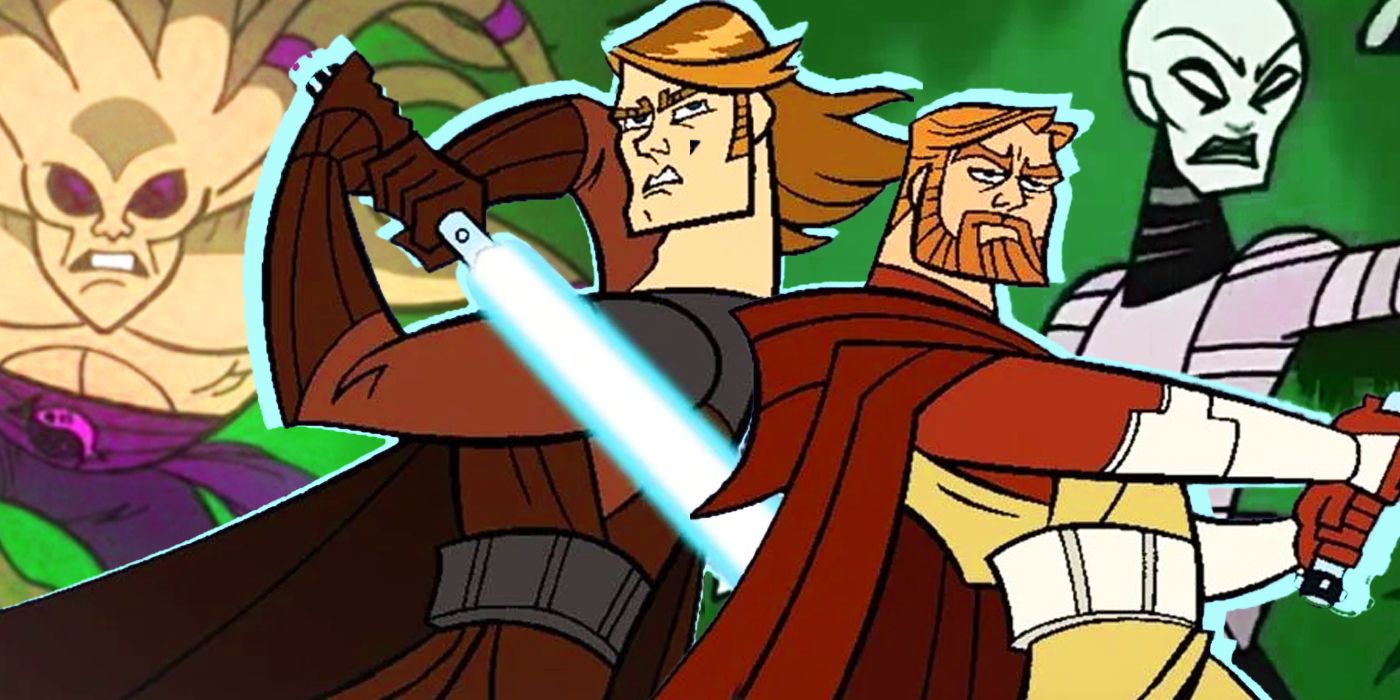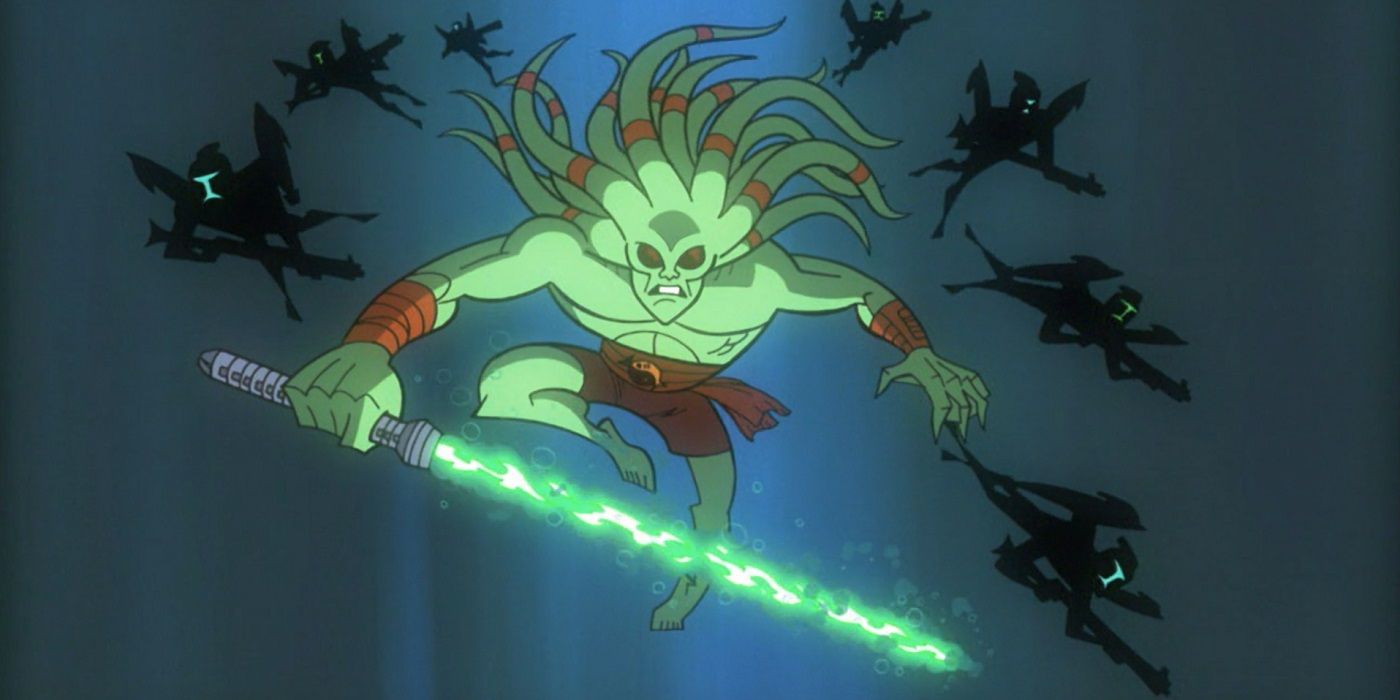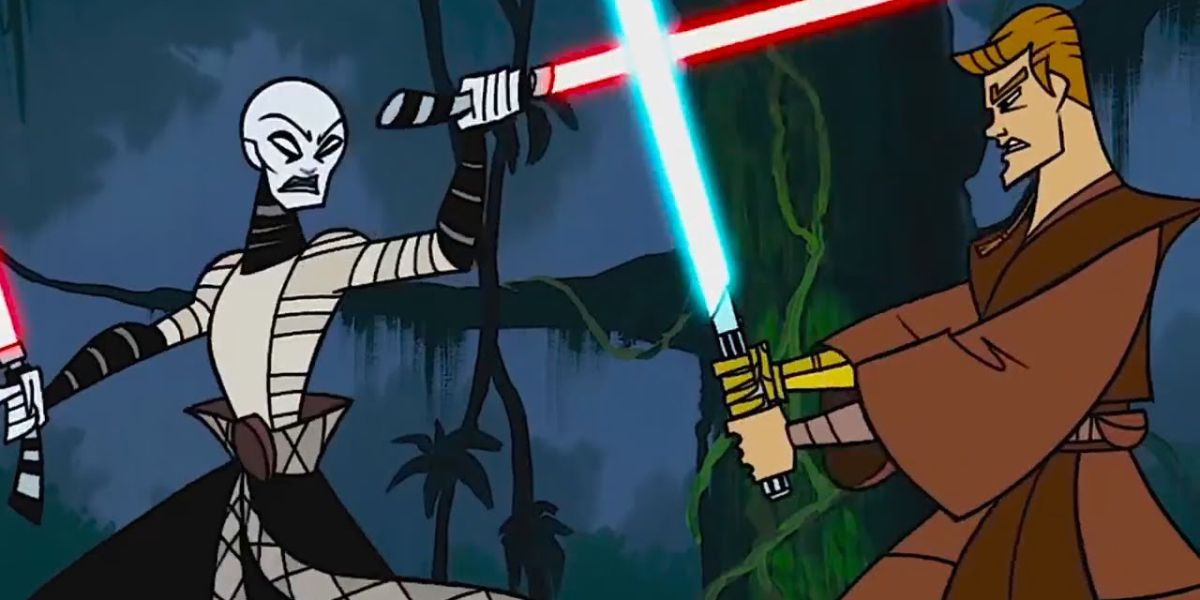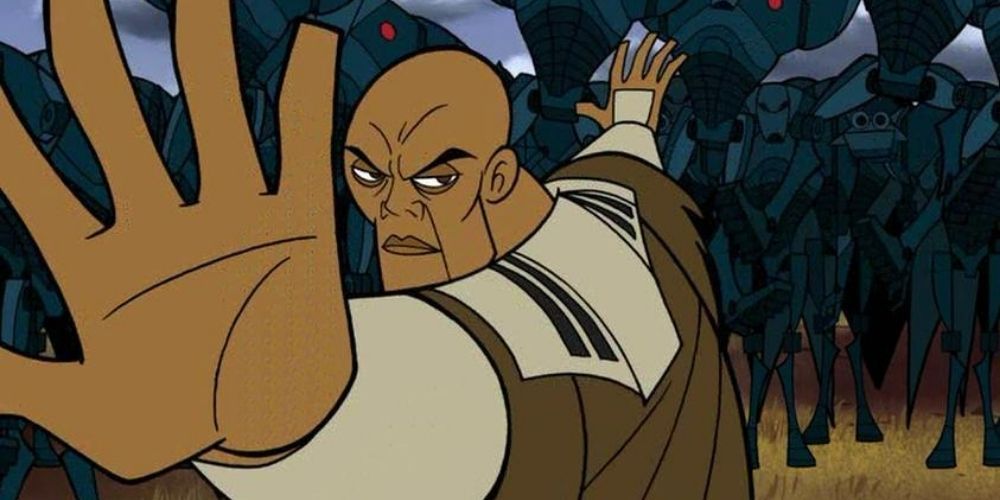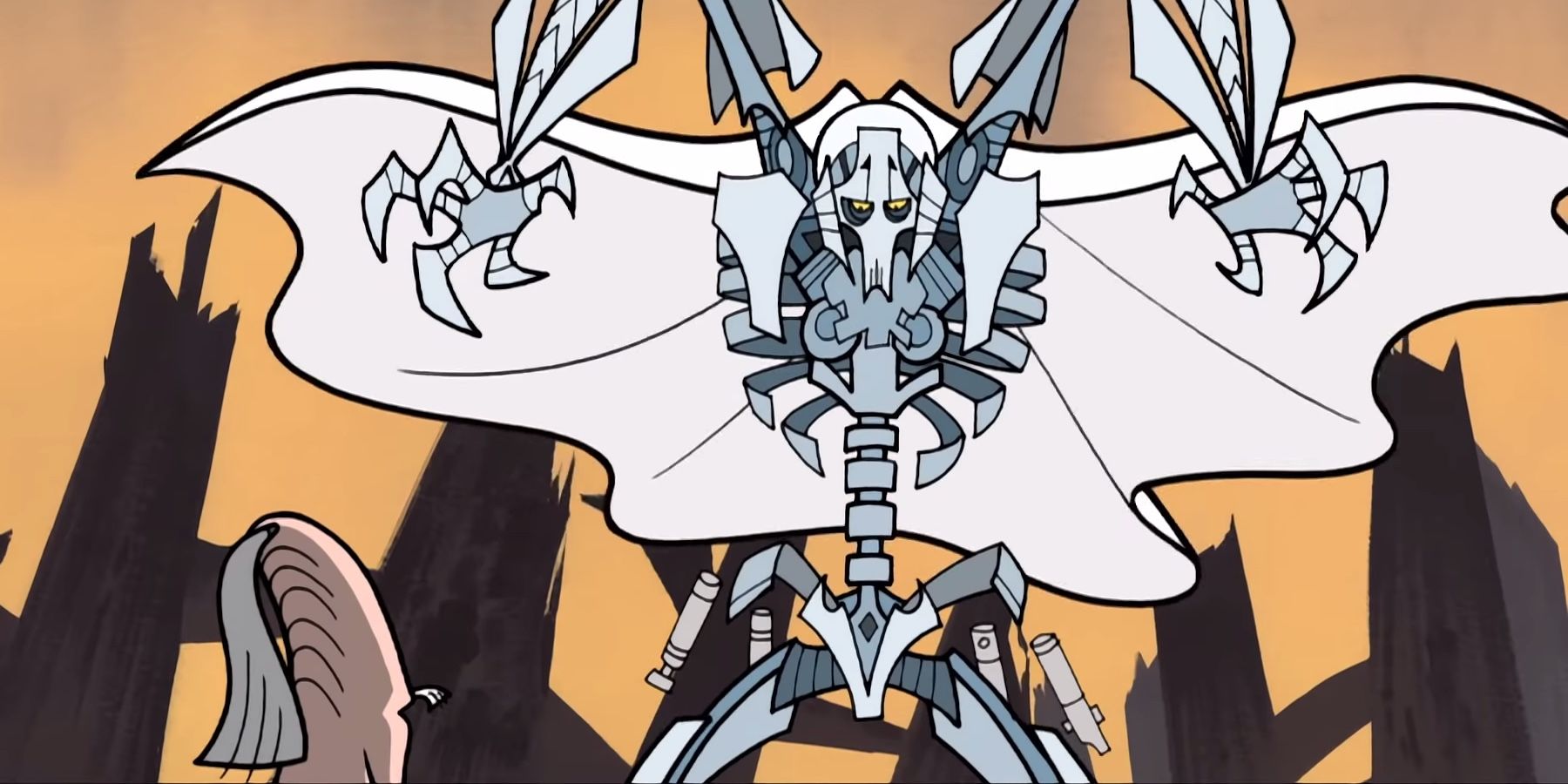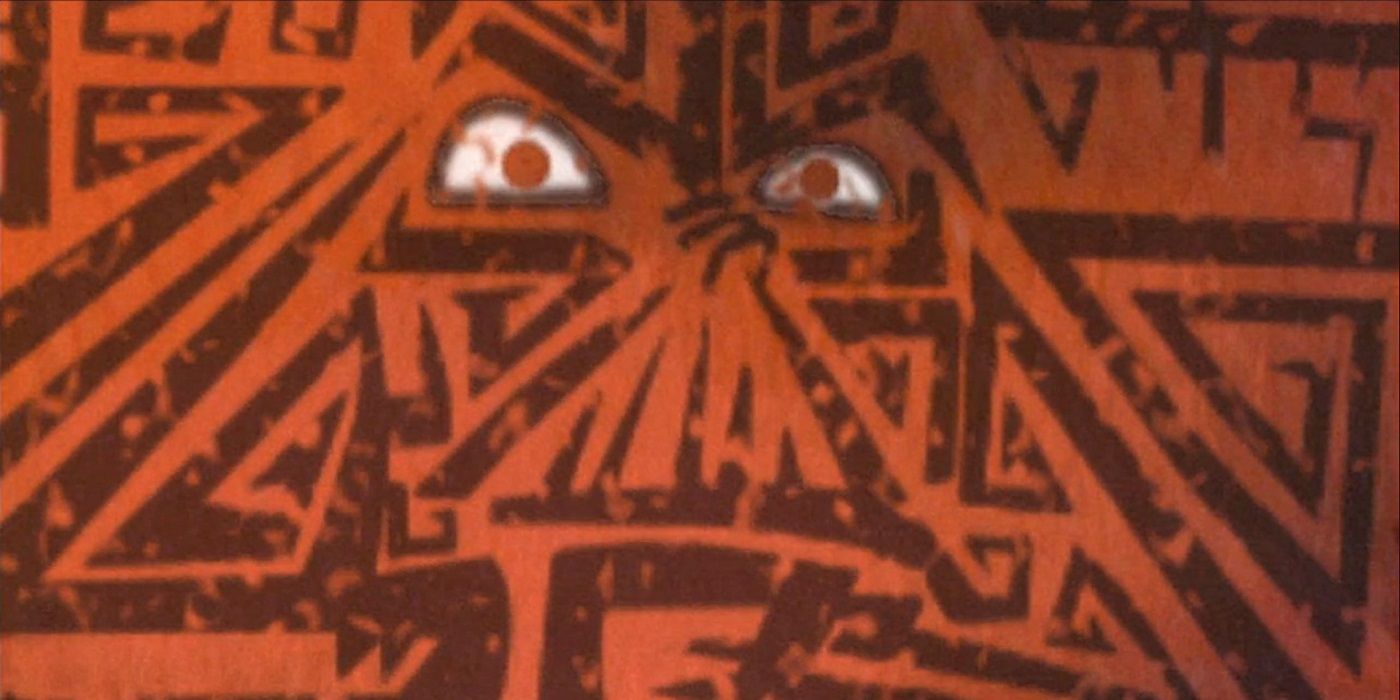Genndy Tartakovsky’s 2-D animated Star Wars: Clone Wars micro-series shorts were an earthquake in the Star Wars universe. They arrived after the release of Star Wars: Episode II – Attack of the Clones, which ended just as the Clone Wars began. There was no practical way to cover the rest of the war in a movie series, no matter how elaborate. The Clone Wars shorts were an attempt to address the oversight, and proved so successful that they launched the beloved 3-D Star Wars: The Clone Wars animated series.
Tartakovsky’s minimalist designs felt right in keeping with the Star Wars universe, and the mixture of kinetic action and brief (sometimes wordless) storylines made them easily digestible. They involved not only expected figures like Anakin Skywalker and Obi-Wan Kenobi, but introduced new characters who eventually became series favorites. With the shorts now available on Disney+, fans can directly compare its best moments with subsequent developments in the 3-D series.
Kit Fisto Takes a Bath
Kit Fisto made a brief appearance in Attack of the Clones, but Clone Wars gave him a proper showcase: taking on Separatist forces beneath the oceans of Mon Cala. Like most of the series’ most stunning sequences, there was no dialogue, but the underwater setting provided a unique environment for Jedi powers and the kind of creative combat details that the series thrived on. It also provided a surprisingly detailed look at Mon Cala, divided in two during the galactic conflict. Fisto came to the aid of the Mon Calamari, hard-pressed by the Separatist Quarren; in just a few shots, Tartakovsky highlighted the aesthetic and technological differences between the two species, as well as the methods they each used to prosecute the war.
Anakin vs. Asajj Ventress
Asajj Ventress made her debut in Tartakovsky’s shorts, which recounted how Count Dooku discovered her in a gladiator pit and recruited her to the Sith. Ventress’s first appearance was a show-stopper: silently murdering Dooku’s host before destroying an entire arena of killers. But her climactic duel with Anakin in the jungles of Yavin 4 was the true standout, as she pushed Skywalker closer to the Dark Side and he took up a red lightsaber to defeat her. The sequence wore its visual influences on its sleeve – another homage to Akira Kurosawa subsequently reflected in the likes of The Mandalorian – and Ventress herself proved an enduring adversary following her debut here.
Mace Windu Destroys a Separatist Army
Like many Jedi, Mace Windu had only appeared in one significant action scene before the micro-series: the finale to Attack of the Clones. Here, he received a showcase segment in which he essentially stood alone against an entire droid army. The Separatists employed a massive landscape-smashing weapon, which cost him both his Clone Trooper back-ups and his lightsaber at one point. Naturally, he didn't need it – destroying the droids with a dizzying array of Force-based telekinesis – but more than his skill, it was the sheer visual inventiveness on display what made the scene work. It also conveyed in brutal terms how much damage a single Jedi could do.
Enter General Grievous
Grievous was the stand-out villain in Star Wars: Episode III – Revenge of the Sith, and Clone Wars viewers got a good look at him before his big-screen debut. The micro-series concluded with his kidnapping Chancellor Palatine in a direct lead-up to Revenge of the Sith, but it was his very first appearance that stood out. He assaulted a dwindling team of Jedi with sudden fury, using all four limbs and an array of stolen lightsabers to kill all but three. He was demonstrably different from the other Sith, though the specifics weren't revealed until Revenge of the Sith, and the animation gave full expression to his fluid, insect-like fighting style. Not only did it help audiences believe that he could take on multiple Jedi and prevail, but it added instant menace to his appearances on movie screens shortly thereafter.
Anakin’s Vision of Vader
The micro-series took pains to develop Anakin’s flirtations with the Dark Side, often depicting him as closer to Darth Vader than he was through most of the 3-D series. That came to a head in the final episodes of the micro-series, as Anakin underwent a vision quest on a distant planet to confront his grim future. In a series of moving cave paintings, he witnessed what he believed to be the planet’s history, only to watch it morph into Vader’s mask. The action swept him up before he had time to fully contemplate what he had seen, but it was as chilling as Luke’s vision in the cave on Dagobah, and a terrific set-up for Revenge of the Sith.
As a trial run for the 3-D Clone Wars Tartakovsky’s version proved prophetic, establishing not only character and mood, but ongoing themes such as the tight relationship between the Jedi and the Clone Troopers beneath them. It also provided a buffer between the two movies – establishing the links from one to the other more firmly – which allowed the subsequent Clone Wars to tell its own stories without concerning itself with how it fit in the timeline. Its best moments were as singular and powerful as anything in Star Wars, and helped the series that followed it to become a classic.

